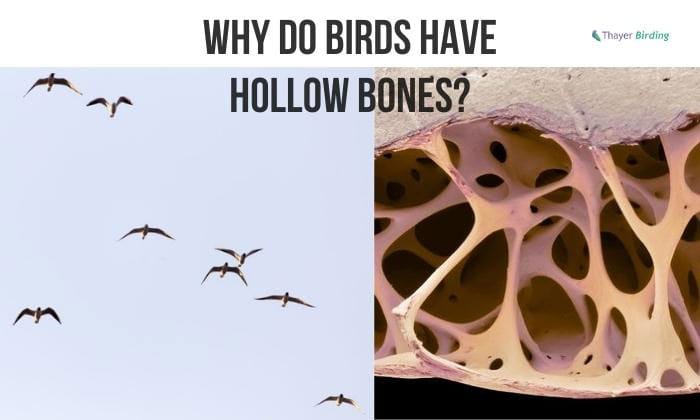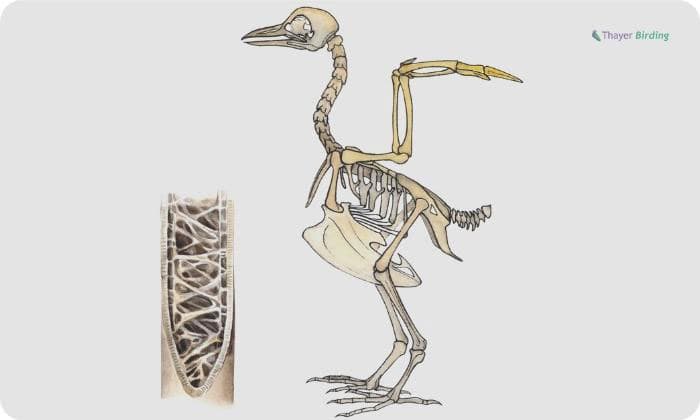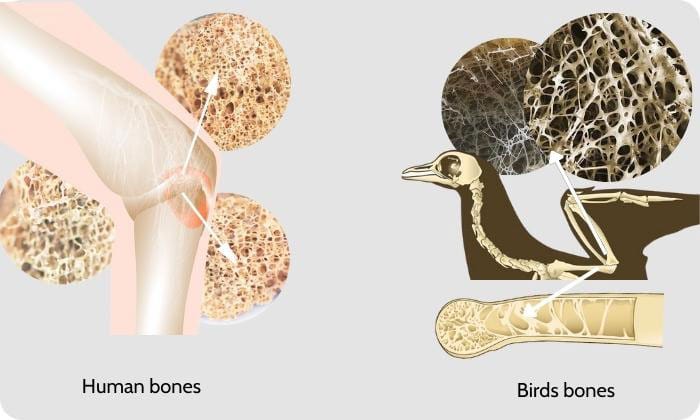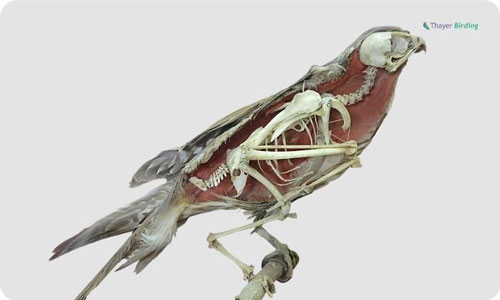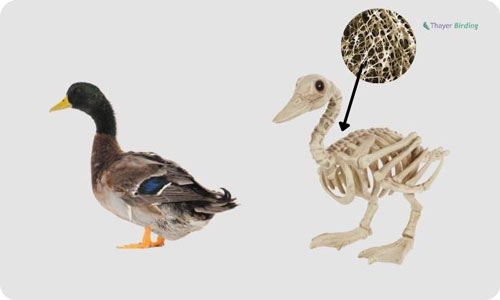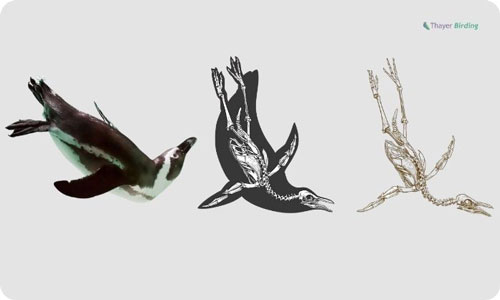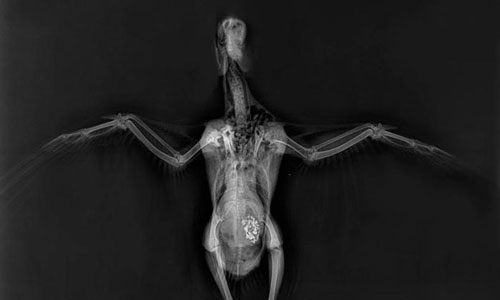Bird anatomy has often intrigued many because bird bones are not packed with blood marrow like other animal bones. Instead, they are filled with air pockets. Consequently, it only makes sense that people ask the question: “why do birds have hollow bones?”
Hollow bones help birds fly by making them more buoyant and lightweight. They also help birds take in more oxygen, which is needed for flight.
Table of Contents
Reason Why Birds Have Hollow Bones
These are the reasons the hollow bones of birds are essential to their survival:
1. Keep Birds Lightweight
Hollow bones help birds achieve a lightweight structure that reduces flight-related calorie consumption. However, the secret behind birds’ lightweightedness is more complicated than it seems.
The confusion mainly stems from how hollow bones make birds lighter. Initially, it was thought that hollow bones don’t contribute much to the body mass of birds, thereby making them light.
However, it was discovered that bird skeletons contribute to body mass as much as other animal skeletons do. Thus, how are birds still considered lightweight?
That is because birds and their skeletons are considered lightweight after taking into account the following factors:
- Ancestors: Modern bird skeletons weigh less than ancestral bird skeletons, with hollow bones being a part of the reason.
- Other animals: When bird bones are compared to other animal bones of the same length, they come out lighter than the latter. However, because bird bones weigh differently (e.g., skulls don’t weigh the same as femurs), the overall bird skeleton can still be as heavy as other animals.
- Surface area: Birds have low body mass for their high surface area, which is optimal for flight mechanics.
- Body volume: Many birds appear large, so they should have heavier bones. However, they often have bones that weigh less than their appearances demand. But this one can’t be wholly credited to hollow bones – the existence of feathers and the birds’ respiratory systems also contribute.
- Stiffness & Strength: High bird bone density and the presence of special struts make birds have bones that are stronger than they look.
This is crucial because if hollow bird bones were as strong as they look, they would not be able to withstand the pressure of flight.
High density also explains how some bird bones and skeletons can weigh as much as (maybe even more) other animals despite their hollowness.
An exception is flightless birds, like penguins, who have heavier bones than birds capable of flight. To no one’s surprise, penguins have little to no hollow bones.
2. Make Bones More Buoyant
The hollow bones of birds also allow them to fly by increasing skeletal buoyancy. Specifically, as birds fly, their bones fill with air, allowing them to maintain altitude more easily.
Buoyancy is the “tendency of an object to rise or float in gas or liquid”. As air is a type of gas, flight birds must be buoyant to float, rise, move, or fly in it.
The same logic also explains why aquatic birds like penguins have fewer hollow bones. They need to be less buoyant to dive into the water; thus, they do not have as much air in their bones as flight birds.
3. Improve Respiration
Another function of hollow bones in birds is to improve respiration. But how does this work?
Birds use lungs and air sacs to breathe. Some air sacs develop offshoots in the hollow spaces of the bird bones, turning them into extensions of the pulmonary system. By having no bone marrow, they can fill the empty spaces with air.
When a bird inhales or exhales, those sacs and offshoots get filled with air. Thus, birds can take in more oxygen than other animals, allowing them to meet the high oxygen demand of flight.
The high amount of oxygen is also used well because birds circulate air efficiently. Their respiratory system follows a one-way, two-stage flow, which has the following benefits:
- Rapid oxygenation
- More fresh air/Higher oxygen content
- Higher oxygen diffusion
This respiratory system also allows birds to breathe in oxygen at high altitudes, which other animals struggle with.
FAQs
Are Hollow Bones Fragile?
Hollow bones are not fragile, at least in birds. That’s because they are more dense with minerals than other animal bones, which makes them stronger and stiffer. Moreover, struts and trusses crisscross inside bird bones, providing critical structural support.
Do All Birds Have Hollow Bones?
Not all birds have hollow bones, with penguins and loons being examples. They do not need hollow bones because they spend more time diving into the water instead of flying in the air.
Hollow bones may even be disadvantageous for these birds, as they make them more buoyant, which makes diving harder. Thus, they’ve eventually adapted to have any hollow bones at all.
Meanwhile, other flightless and aquatic birds did not eliminate hollow bones. Instead, they developed to have fewer of them compared to flight birds.
Conclusion
Why do birds have hollow bones? The ultimate answer is that they make flight possible. They do so by helping create a lightweight bird bone structure, which consumes less metabolic energy during flight.
The hollow of bones can also be filled with air, which is helpful for flight in two ways. First, they make the bird more buoyant in the air. Secondly, they can become extensions of the pulmonary system, allowing the bird to take in more oxygen needed for flight.

George and I became friends after a birdwatching trip with our new group. And we have been enjoying every adventure together. When he told me the idea of establishing a site that shares our experiences and fun, I immediately agreed. After trials and errors, here we have Thayerbirding.


